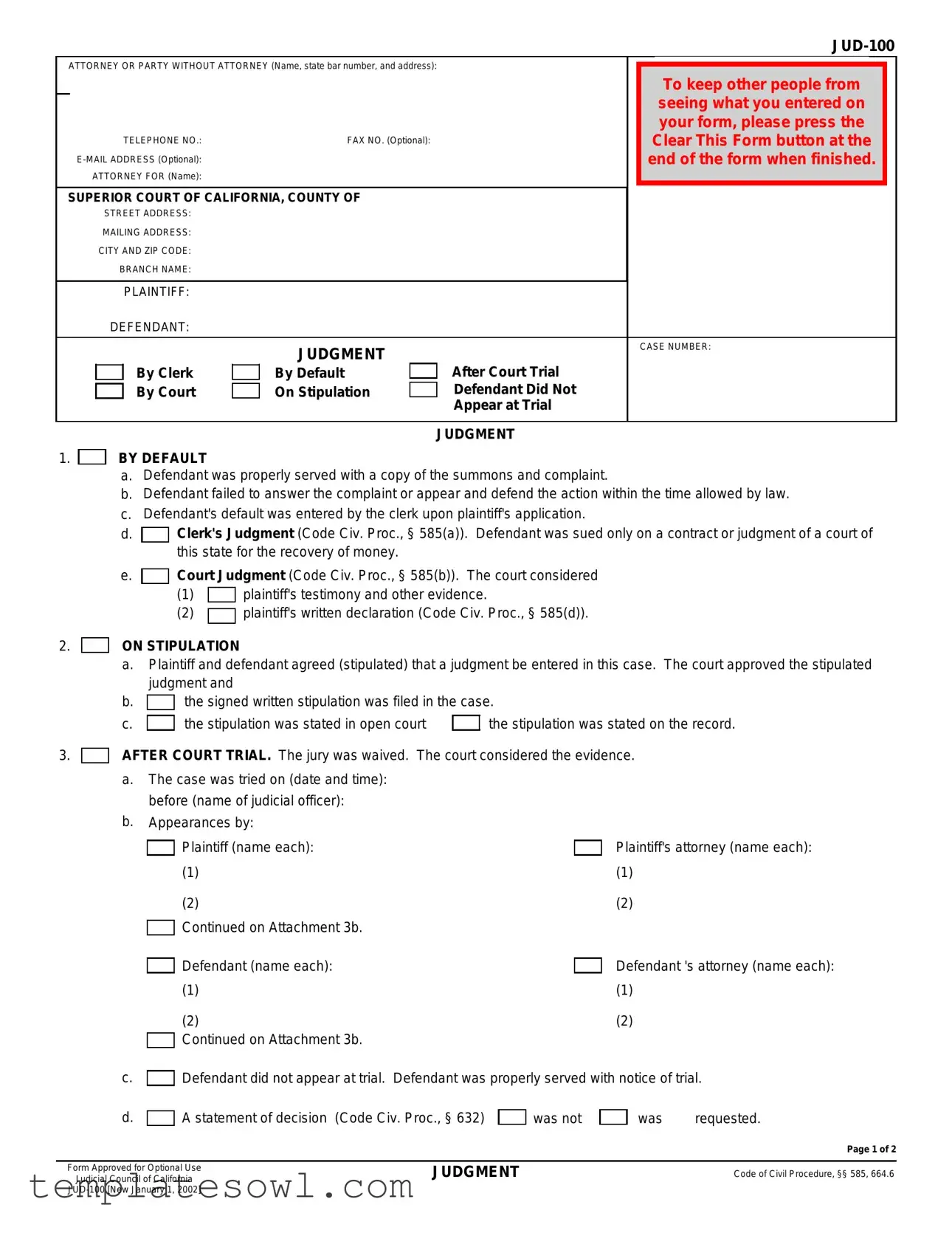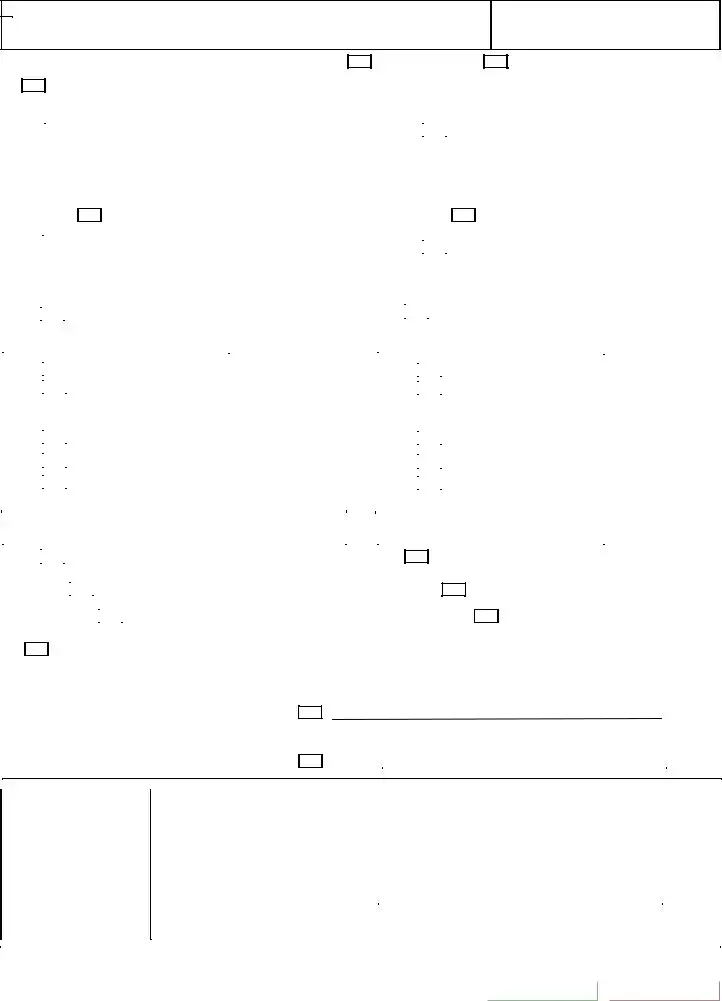When filling out the JUD-100 form, individuals often encounter pitfalls that can jeopardize their case. One common mistake is failing to provide complete and accurate information. For example, if the names of the parties involved or their addresses are incorrect, it can result in delays or even dismissal of the case.
Another mistake is neglecting to indicate the correct type of judgment being sought. The form offers several options, such as judgment by default or on stipulation. Selecting the wrong option can confuse the court, leading to potential complications in the judgment process.
People also frequently overlook required signatures. Both the plaintiff and the defendant must provide their signatures on the form. If these signatures are missing, it could invalidate the judgment. Alongside this, it is crucial to ensure that any necessary attachments are included, as failure to do so can lead to an incomplete submission.
Calculation errors in the amount of damages sought are another serious issue. Accurately stating the total amount, including damages, prejudgment interest, attorney fees, and costs, is essential. Inaccuracies in these calculations can raise questions and prolong the case.
Additionally, not properly documenting the evidence supporting the claim can be detrimental. The form requires a clear presentation of the evidence presented at trial or the agreement reached in case of a stipulated judgment. Without this documentation, the court may struggle to substantiate the claims made.
People might also forget to include the relevant dates and details concerning the trial or stipulation. This includes dates, names of judicial officers, and parties involved. Providing this information is vital as it paints a clear picture for the court regarding the proceedings.
Finally, individuals sometimes fail to review the form for errors or omissions before submission. Taking a moment to double-check the completed form can prevent minor issues from escalating into major problems that could potentially derail the case.


